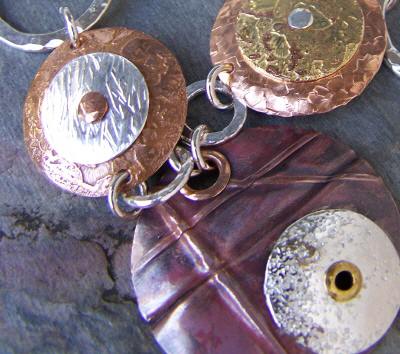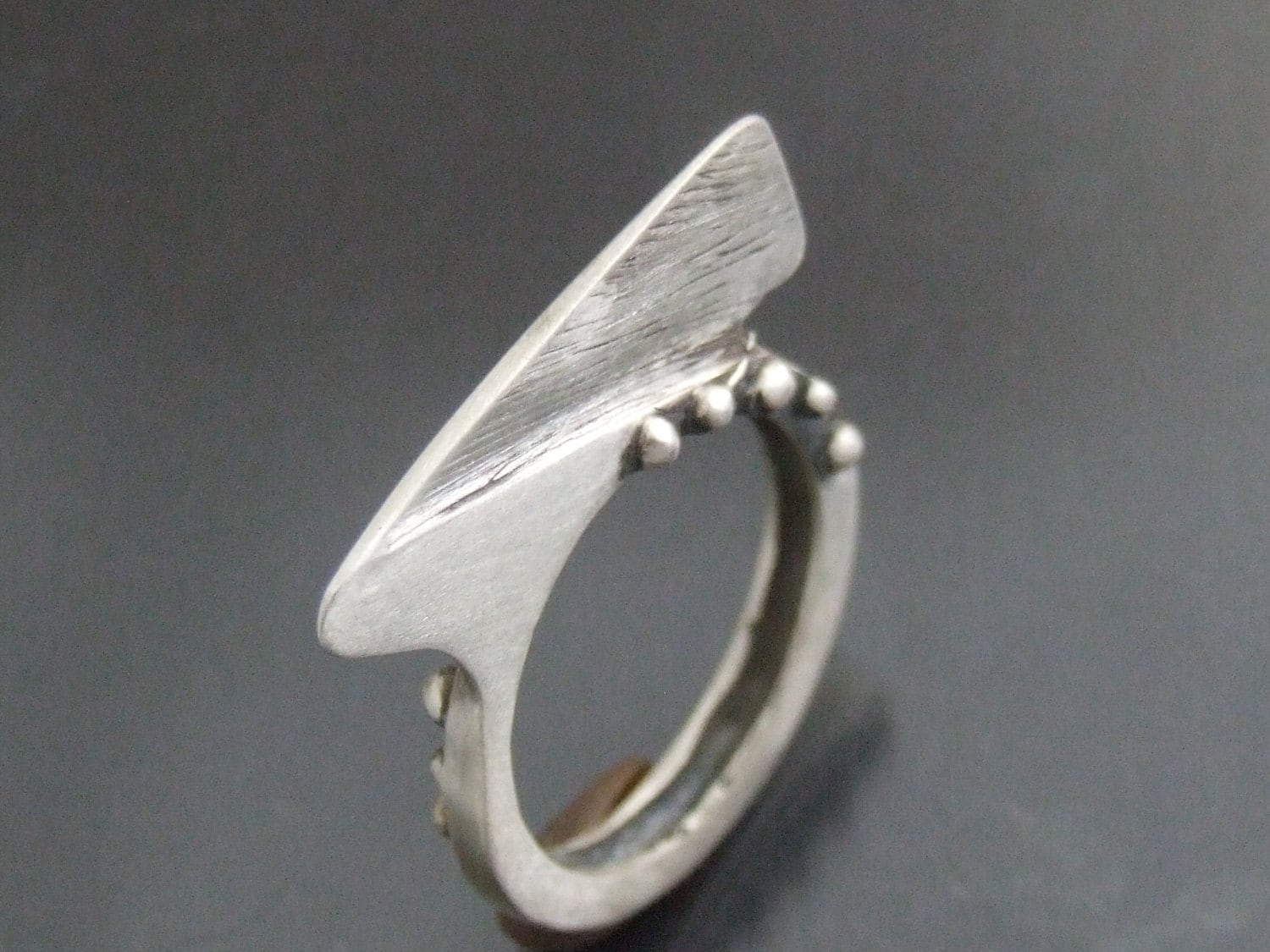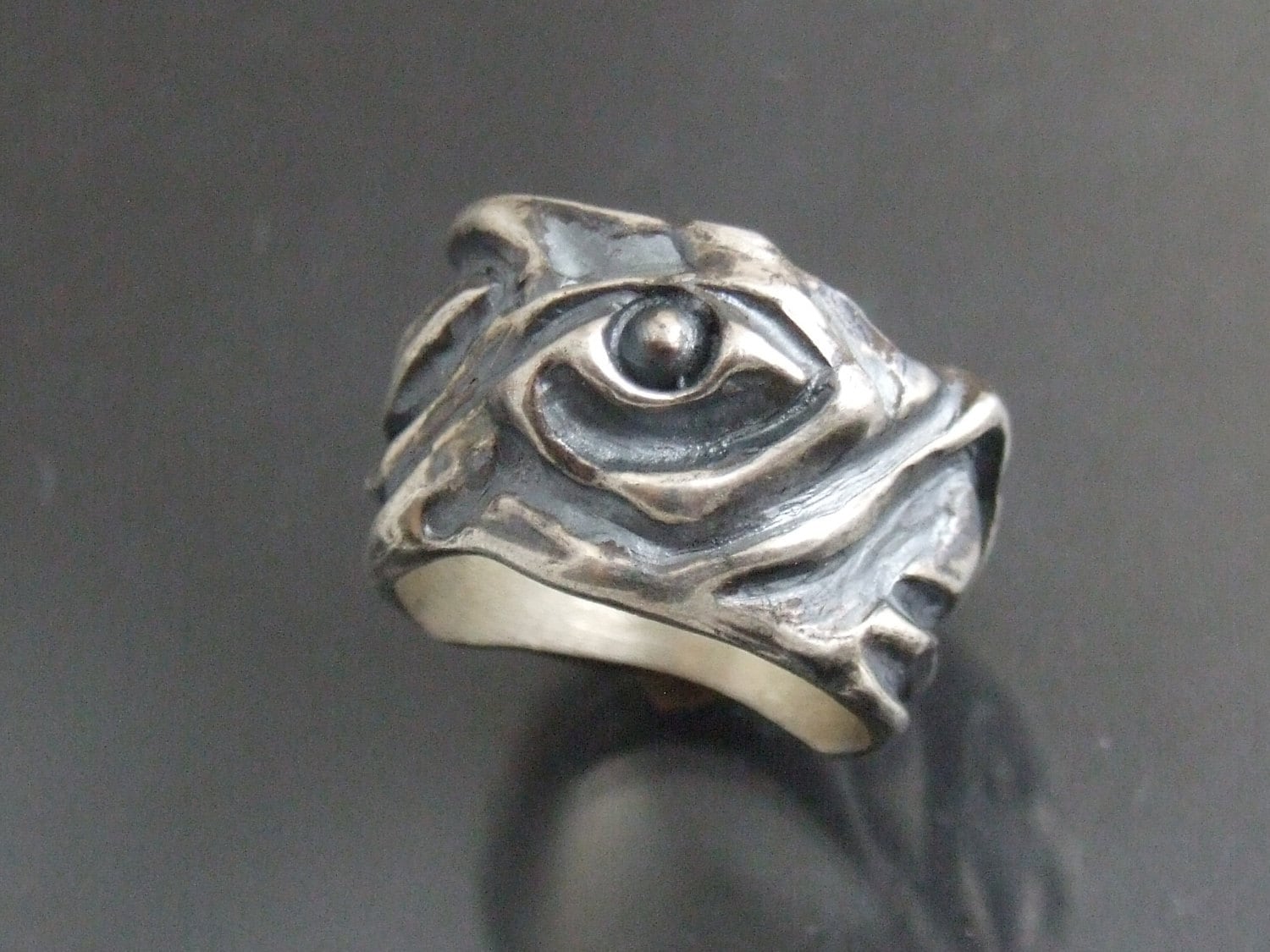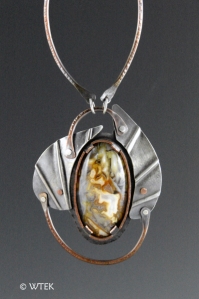WELCOME BACK!!!
Happy New Year!
Sculptural Ring Castings
Antonio Limuaco
Brooklyn, New York, United States
Gison Liedholm
 |
| Abstract ring by |
Artist Unknown
Warm Up - Pick a partner or two and critique one of the rings on the handout.
1 Describe what
you see. This
is the objective portion of the art critique. It only includes a description of
the type of art the objects in the artwork, and the style.
·
Artist's name.
·
Title of work.
·
Type of jewelry ring,
bracelet, pendant, etc.
·
Subject of the design,
etc.
·
Recognizable objects
in the jewelry
·
What material did the
artist use? (copper, silver, gold, plastic)
·
What is the style?
(representational, abstract, non- Objective)
2 Analyze the
artwork. How
do the elements work together to create an overall impression conveyed by the
jewelry. Elements you need to analyze when you critique artwork include:
- What type of colors
were used? bright, warm, cool, muted, complimentary, neutral, monochromatic
- Types of shapes and
lines used. vertical, horizontal, geometric, organic, curvy, straight,
graceful, wavy
- Types of space;
flat, shallow deep
- How each element
contributes to the mood, meaning and aesthetic sensation of the jewelry
- Subject of the design,
etc.
- Recognizable objects
in the jewelry
- What material did the
artist use? (copper, silver, gold, plastic)
- What is the style?
(representational, abstract, non- Objective)
Learning Objective: You will learn the basics of the lost wax casting process and gain a greater understanding of repetition and three dimensions used in jewelry design.
Vocabulary:
sculptural- 1.The art or practice of shaping figures or designs in the round or in relief, as by chiseling marble, modeling clay, or casting in metal.
2. Ridges, indentations, or other markings, as on a shell, formed by natural processes.
lost-wax casting - A casting process for which a sculptor must first produce his sculpture in wax. She/he creates a mold around this made of refractory materials or investment. When the mold is heated, the wax melts away, so that molten metal can replace it, reproducing exactly the original wax sculpture.
sprue - In lost-wax casting, a channel through which molten metal can enter a mold (runners) and air and gas can escape (risers). This term applies to the wax rods attached to the wax model that result in the formation of these channels, and for the rods of metal that may be cast within channels once metal is put into the mold. In some regions, to attach the wax rods is called spruing.
investment - A thick jacket of refractory material poured around a wax model which forms the mold in lost-wax casting.
additive- building up the surface by melting wax to the wax base.
subtractive- starting with a larger mass and removing wax from it with tools.
Agenda -
- Critique a ring
- Draw 10 sculptural ring designs
Jewelry II Agenda -
- Draw 10 rings with a function wax cast design ideas.
- The function will most likely be fictional.
- Traditional function- Graduation, wedding, superbowl, etc.
- Fictional - Super power, magic healing ring, making wishes, etc...
Criteria: You will design a ring using sculptural elements to define the space around the ring. Think about things found in nature to design a sculptural ring.
- Start with 10 ring design drawings
- 2 carvings - carved out spaces or shapes/forms within and throughout the design.
.jpg) |
| by Hans Meevis |
Wax Carving Process
Wax must weigh less than 1.5 grams
1. Saw wax tube with spiral saw blade.
a. Saw the width thickness that you want
b. Saw 2 pieces for 2 rings you will be carving and then you will choose the best carving.
2. Sizer: Use the wax sizer mandrel to carve out the correct size.
a. Don’t carve too much
b. Be aware to not leave big marks on inside by pressing too hard
3. Carving:
a.Use pointed tools to draw on wax first if you want to draw out design
b. Start with the large wax file and carve the basic shape
c. Use your large half round file to form design
d. Go to the small files to get design
e. You can also use the above tools for texture marks
f. Remember to carve the thickest parts first, then go down to the thinnest to prevent breaking the wax model
g. If you press too hard you will break the wax model.
h. Never try on your ring during the carving process because it can easily break.
i. If you break the wax, repair it with super glue.
j. Don't use your first piece as a gift for your sweetheart or bestie.. Your first attempt is going to be very special and will be something that you will keep forever to look back on.
k. Weight: Remember someone is only going to wear a piece of jewelery if it is comfortable. Rings for men shouldn't weigh more than 15gms and less for woment. The weight of the wax will be a different ratio for each metal. For Silver multiply the weight of the finished wax piece by 10.5
4. Finishing Steps:
a. It is very important that all marks are out of the wax. It takes a lot less time to remove marks now, than if in the metal!!!
b. Gently file with fine files, then sand with 400, then 600, buff with a nylon
REMEMBER TO TAKE OUT ALL SCRATCHES NOW THAT YOU SEE IN THE WAX!!!
IT WILL TAKE 10 TIMES LONGER TO GET THEM OUT OF METAL!!!!
Resources- http://external-brain.redwolf.com.au/2011/03/01/silver-tentacles-ring-by-peggy-skemp/
http://www.flickr.com/photos/janosgaborvarga/2869094192/
http://hansmeevis.blogspot.com/2009/11/waxes-cast-rings-shells-and-gears.html



















.jpg)
.jpg)




